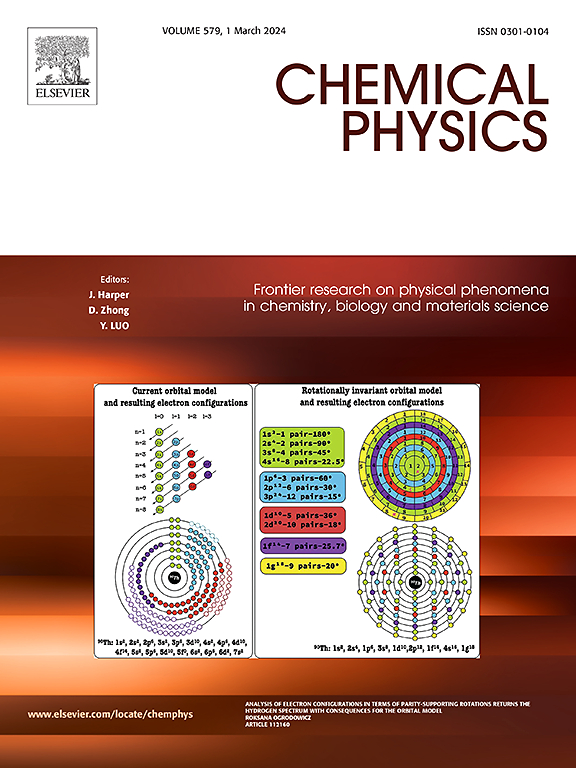受激氩原子在氦原子上散射的截面
IF 2.4
3区 化学
Q4 CHEMISTRY, PHYSICAL
引用次数: 0
摘要
本研究的目的是从计算的势能曲线和非对角矩阵元素中得到He上受激Ar原子在基态下的弹性和非弹性截面。利用MOLPRO 2015电子结构程序计算了49种自旋轨道态的势能曲线、自旋轨道相互作用和非绝热耦合矩阵元。在此基础上,采用指数玻恩畸变波法计算了非弹性散射截面。计算得到的非弹性过程的截面和速率常数可用于动力学非辐射跃迁的计算。本文章由计算机程序翻译,如有差异,请以英文原文为准。
Cross sections for scattering of excited argon atoms on helium atom
The objective of this study was to obtain elastic and inelastic cross sections for the excited Ar atom on He in the ground state from calculated potential energy curves and nondiagonal matrix elements. The calculations of potential energy curves, spin–orbit interactions, and nonadiabatic coupling matrix elements were carried out using the MOLPRO 2015 electronic structure program for a total of 49 spin–orbit states. On their base inelastic scattering cross sections were calculated using the exponential Born distorted wave approach (EBDW). The calculated cross sections and rate constants for inelastic processes can be employed in the calculation of dynamics nonradiative transitions.
求助全文
通过发布文献求助,成功后即可免费获取论文全文。
去求助
来源期刊

Chemical Physics
化学-物理:原子、分子和化学物理
CiteScore
4.60
自引率
4.30%
发文量
278
审稿时长
39 days
期刊介绍:
Chemical Physics publishes experimental and theoretical papers on all aspects of chemical physics. In this journal, experiments are related to theory, and in turn theoretical papers are related to present or future experiments. Subjects covered include: spectroscopy and molecular structure, interacting systems, relaxation phenomena, biological systems, materials, fundamental problems in molecular reactivity, molecular quantum theory and statistical mechanics. Computational chemistry studies of routine character are not appropriate for this journal.
 求助内容:
求助内容: 应助结果提醒方式:
应助结果提醒方式:


